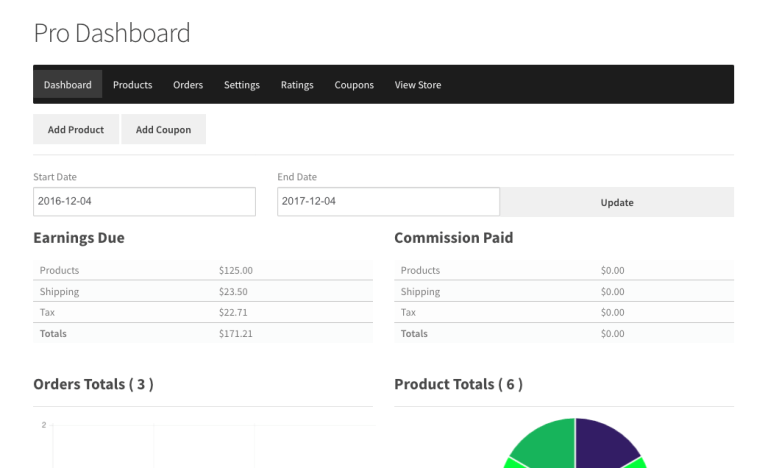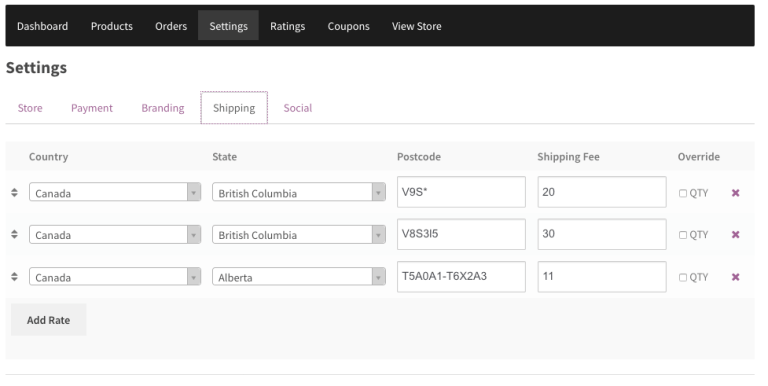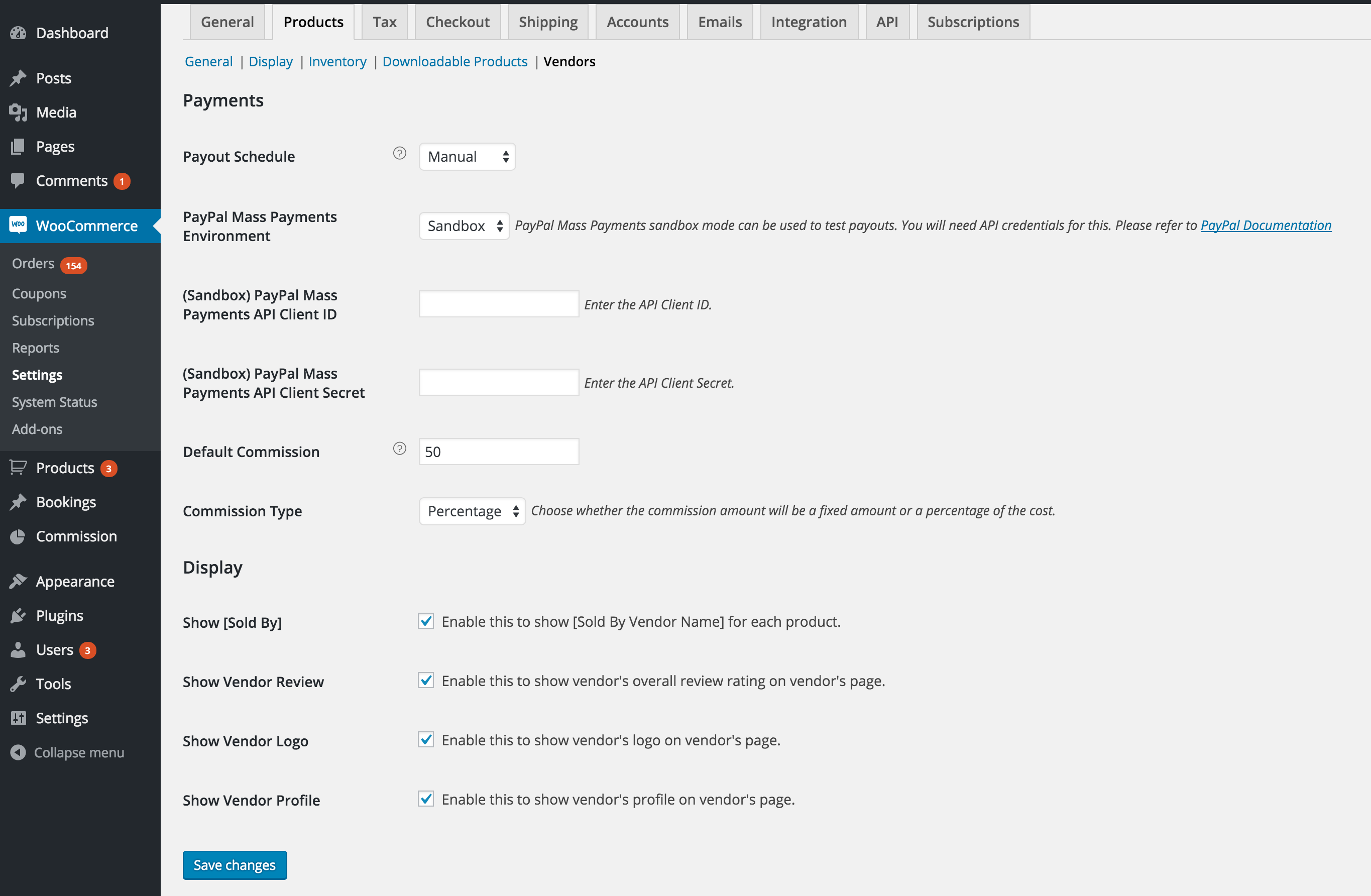
Building the next Amazon is everyone’s dream.
Allowing sellers to use your online platform to reach wider audiences without holding stock, investing in shipping and warehousing and – let’s be honest – with a few dollars budget… is actually possible in WooCommerce.
The WooCommerce Multi-Vendor/Marketplace scenarios are many – not a surprise. And sometimes, a plugin is all you need to build an Etsy-alike website. Not bad for a small investment – you can focus on the marketing while the WooCommerce plugin does the rest.
However, building a full website, no matter its project specifications, is never easy. Many WooCommerce and ecommerce entrepreneurs underestimate how much work, caution, attention, patience and money are needed to develop an online marketplace.
Nothing is free – if something looks doable with a $79 plugin you also need to consider the cost of time, outsourcing, marketing and third parties (such as picking a reliable hosting).
Anyway, today we’ll take a look at some of the best plugins for turning a WooCommerce website into a multi-vendor marketplace, as well as a simple PHP snippet that might just be enough for you. Enjoy!
1. PHP Workaround: “Manual” Multi-Vendor Snippet
WooCommerce allows you to do almost anything with a couple of PHP snippets. And if your vendors don’t need their own dashboard, website access, product uploading functionalities and automatic payments and commissions… you don’t really need a Multi-vendor / Marketplace plugin!
You could simply add a product custom field called “Seller” or “Vendor”, display this on the single product page frontend, Cart and Checkout pages, Thank you page and email receipts. Then, you could manually pay your vendors a commission on a monthly basis directly from your bank account.
I just re-used one of my snippets to add product custom fields – here’s the adapted version for adding the “Seller” field to each product.
/**
* @snippet Display Seller @ WooCommerce Single Product
* @how-to Get tutoraspire.com FREE
* @author Tutor Aspire
* @compatible WooCommerce 6
* @donate $9 https://www.tutoraspire.com
*/
add_action( 'woocommerce_product_options_pricing', 'tutoraspire_add_seller_to_products' );
function tutoraspire_add_seller_to_products() {
woocommerce_wp_text_input( array(
'id' => 'seller',
'class' => 'short',
'label' => __( 'Seller', 'woocommerce' )
));
}
add_action( 'save_post', 'tutoraspire_save_seller' );
function tutoraspire_save_seller( $product_id ) {
if ( isset( $_POST['seller'] ) ) {
update_post_meta( $product_id, 'seller', $_POST['seller'] );
}
}
add_action( 'woocommerce_single_product_summary', 'tutoraspire_display_seller', 25 );
function tutoraspire_display_seller() {
global $product;
if ( $seller = get_post_meta( $product->get_id(), 'seller', true ) ) {
echo '';
_e( 'Seller: ', 'woocommerce' );
echo '' . $seller . '';
}
}
A bit of a workaround, but it works!
You could also place the vendor description in a custom WooCommerce product tab on the frontend. And also add some PHP calculations to count sales by vendor at the end of the month. If you’re a developer, you can really code this “manual” solution as you wish!
Here’s the final result:
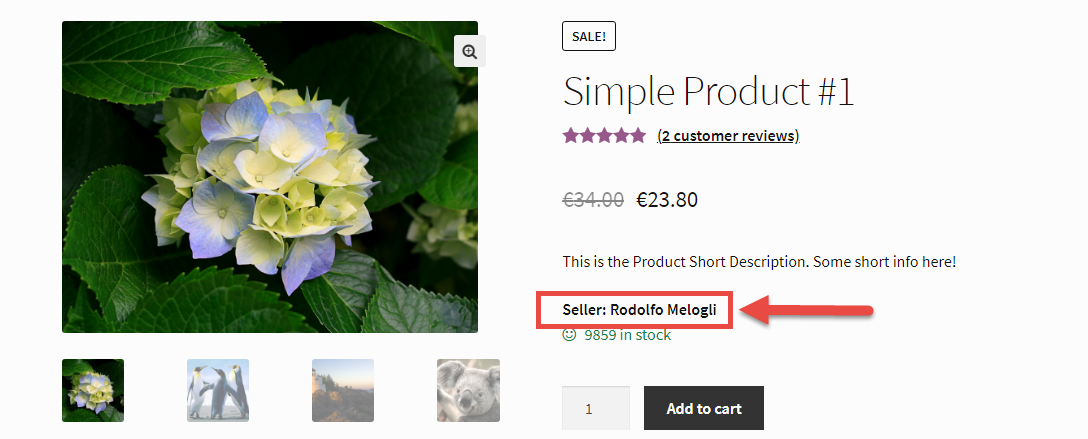
But if you’re not a developer, or if you need an automatic, optimized, WooCommerce Multi-Vendor / Marketplace solution, then look no further than an official plugin.
And to me, there are only 4 major pieces of software that do their job well: Dokan, WooCommerce “Product Vendors”, YITH WooCommerce Multi Vendor and WC Vendors.
Of course, it’s difficult to say which one is the “best” – let’s be honest, there is no “best”. Instead, there is a “more relevant to your project” plugin. Their prices are different, their code is different, but all 4 come with great support and functionalities.
2. Dokan (Free – $149 – $249 – $499 – $999/year)
Dokan is another excellent freemium plugin that lets you build a multipurpose marketplace with WooCommerce – right from traditional and digital marketplace to service-based marketplace.
While the free plugin comes with all the basic yet necessary features to build your marketplace, the premium plans, such as Business and Enterprise, provide the ultimate features that let you take your eCommerce marketplace to greater heights. You can view the comprehensive segregation of the plans with their pricing and features here.
However, one of the most notable features of Dokan is that it supports over 100+ WooCommerce-supported payment gateways – including Stripe, PayPal, and Moip.
The plugin’s premium features include WC Product Addon integration, Reverse Withdrawal, Stripe Express, Product Advertising, and Request for Quotation.
Besides, its easy management and wonderful facilities – such as Vendor Management UI, Admin Reports, Coupon Creation, and Multiple Commission Types offer a complete experience to the admins. You can view their complete set of features on their official website.
Moreover, it’s also popular for its detailed technical documentation, 24/7 support, regular updates, bug fixes, and distinctive UX for the admins to facilitate their eCommerce marketplace management.
Here are a few screenshots:


3. WooCommerce Product Vendors ($79/year)
The immediate disadvantage of the official WooCommerce plugin is that there is no free version available on WordPress.org. Unlike YITH and WC Vendors, you therefore have to rely on the 30-day money-back guarantee in order to test the product.
Product Vendors plugin documentation is very detailed – and because I don’t feel like copying everything from that page, I seriously advise you learn more on the official WooCommerce website.
However, if I had to give you my personal opinion, here are the best plugin features. First of all, you can define a per-product vendor commission (on top of the global one), so that you can agree different rates with different vendors.
The reporting is also good, with an overall view of vendor sales, commissions and earnings for each month.
Vendors can control their public profile and upload products themselves from the frontend, as well as receiving commission payments automatically.
Website (marketplace) owners can, on the other hand, approve/reject vendor applications, set up payouts schedule (instantly, monthly, etc.) and also force products to go into “pending” mode until they can publish them.
Here are a few screenshots:
4. YITH WooCommerce Multi Vendor / Marketplace (€99/year)
As well as WC Vendors, YITH WooCommerce Multi Vendor Plugin follows a “freemium” model. The basic plugin is completely free of charge, while the premium comes with more features and support. this is a no-brainer if you wish to test out a plugin before buying.
Once again, no point in describing all the plugin features when they’re widely covered on YITH WooCommerce Multi Vendor plugin page. On the same page, you can find also the “Free vs Premium” tab, which describes the most important differences between the two pricing plans.
To introduce briefly this plugin and its features, let’s first remember that YITH support is highly qualified and – from what I’ve seen so far – very fast and happy to accommodate customization requests.
Second, the YITH WooCommerce Multi Vendor Plugin comes with a very interesting set of functionalities. The free plugin looks very similar to the WooCommerce “Product Vendors” Plugin we’ve seen above. On top of this, the premium version comes with more advanced reporting and PayPal payout settings.
On the frontend, you can manage/move almost anything, while on the backend vendors can create coupons, set products as featured, change their shop header and description and manage shipping zones and rates. In this case, it seems vendors have more options.
Here are a few screenshots:
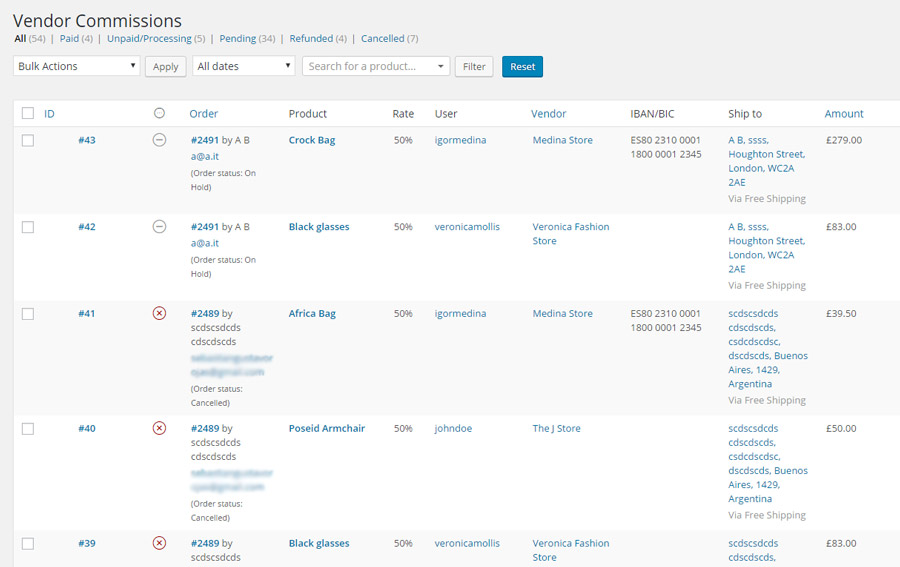
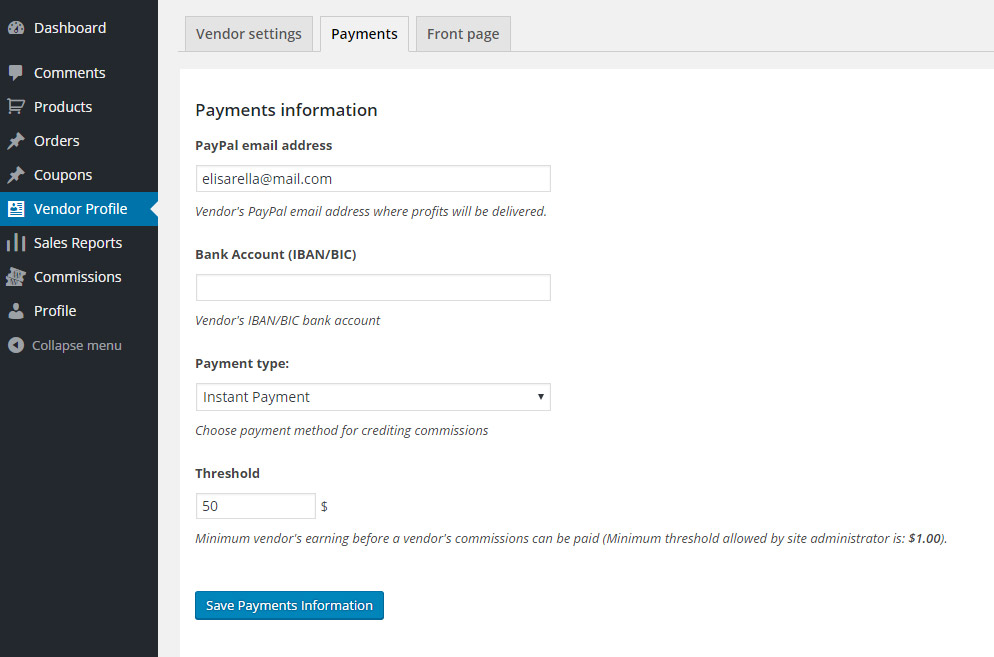
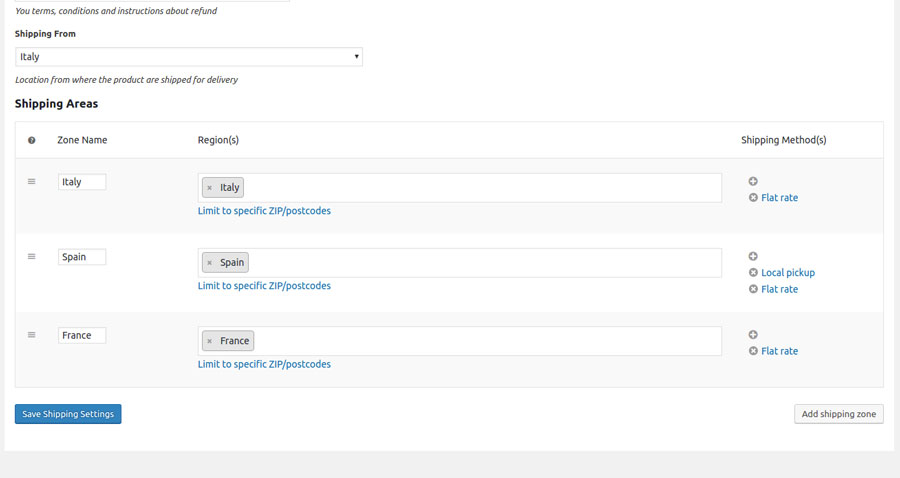
5. WC Vendors (Free – $249 – $499/year)
WC Vendors is the most expensive product, and has also additional premium extensions that you might need to purchase in order to complete your project.
In this case, as well as for YITH, WC Vendors comes in a free version available on WordPress.org. It seems pretty similar, once again, to YITH and WooCommerce so you will need to do further research to see which one suits your project.
In the premium version, there is a nice Vendor Frontend Dashboard, vendor order and coupon management, shipping rates and also capabilities settings. All the features can be found on their official page.
There is also a small range of in-house and third-party extensions that work with the basic premium plugin: you can integrate WC Vendors with Stripe payouts, WooCommerce bookings and an auctions plugin.
Here are a few screenshots:

